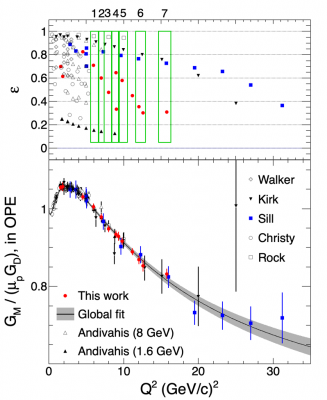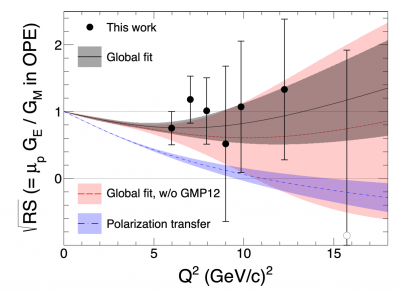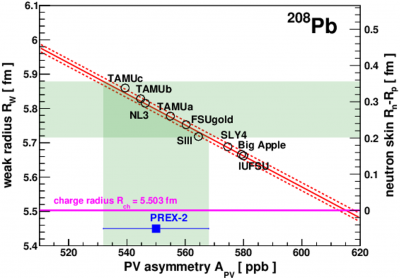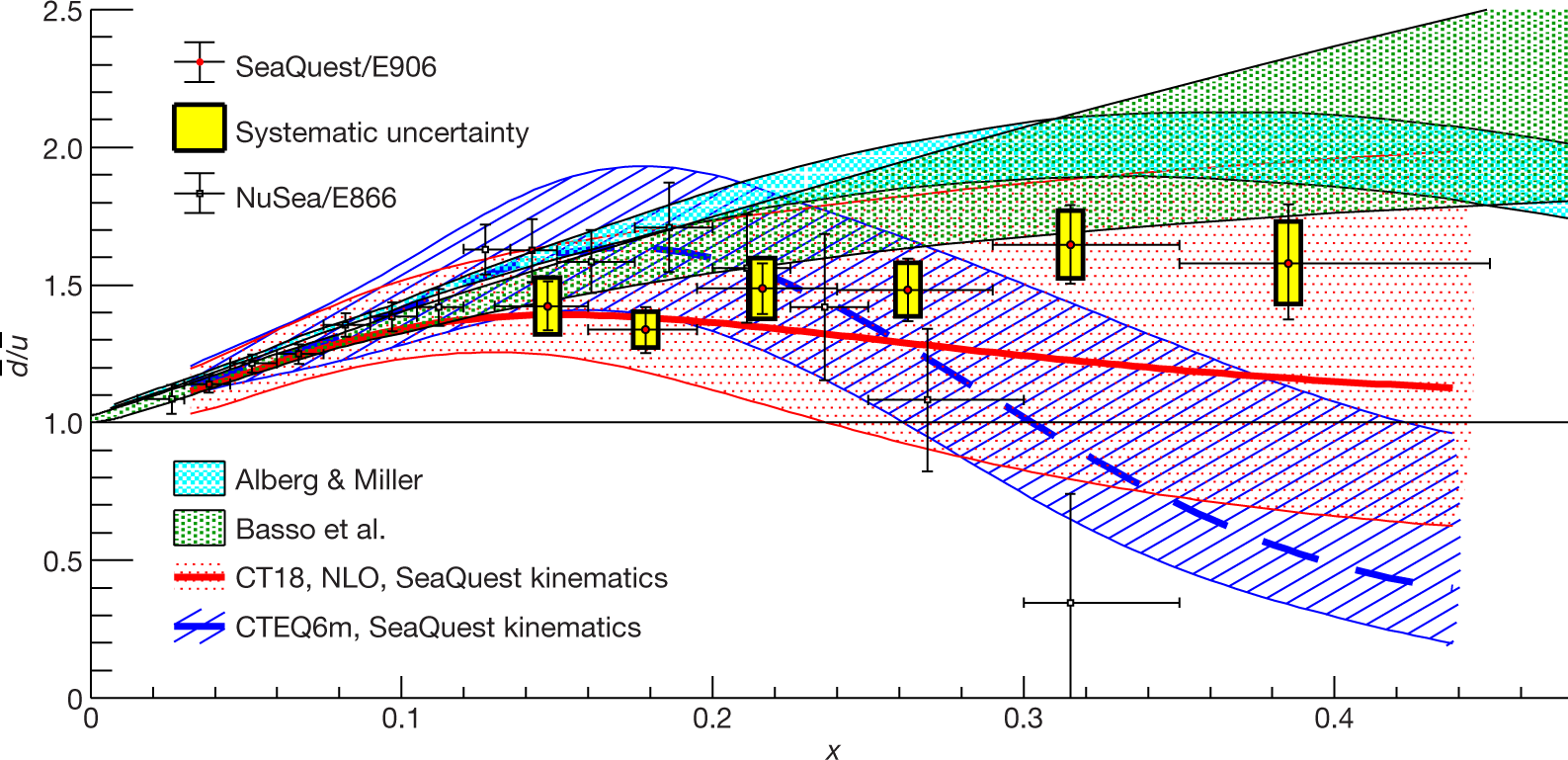The Hall A Collaboration at Jefferson Lab is reporting new precision measurements of the cross section for elastic electron-proton scattering at large values of the momentum transfer Q2 and low values of the virtual photon polarization ε. These new data significantly improve the precision of our knowledge of the proton’s magnetic form factor at large Q2 values. When combined with existing high-ε data at similar Q2, the new Hall A data allow us to nearly double the Q2 range for which it is possible to directly separate the contributions of longitudinally (L) and transversely (T) polarized virtual photons to the cross section, in a procedure known as Rosenbluth separation or L/T separation. In the one-photon-exchange approximation, this procedure allows us to separate the electric (GE) and magnetic (GM) contributions to the scattering. The new data are consistent with approximate form factor scaling; i.e., μp GE/GM = 1 (here μp = 2.79284734462(82) (according to PDG), is the proton’s magnetic dipole moment in units of the nuclear magneton). This result contradicts the expectations for this ratio based on precise measurements of the proton’s electric/magnetic form factor ratio using the polarization transfer technique. The new data significantly increase the range of Q2 for which significant two-photon-exchange contributions to the elastic electron-proton scattering cross section are conclusively established.
A manuscript reporting the new results has been submitted to Physical Review Letters. The preprint of the manuscript can be found here.



